Levoit is part of the Arovast Corporation, which produces an array of electronics, from air fryers to fitness trackers. In 2017, the company turned its attention to indoor air quality. Since then, Arovast Corporation has developed a wide range of high-performance yet budget-friendly air purifiers. This led to Levoit’s rise as one of the biggest names in the air cleaning space.
Among Levoit’s portfolio of purifiers, we’ve seen some top-quality units, including the Vital 200S and their latest unit, the EverestAir, which is the fastest purifier to complete the HouseFresh Clean Air Speed Test.
However, Levoit’s most popular products are in the Core series. These affordable purifiers are designed to cover different-sized spaces within the home, from the Core Mini for personal use up to the Core 600S, which caters to spaces as large as 635 sq. ft.
The first unit in this series was the Core 300. It sets the benchmark for budget-friendly air purifiers, with impressive air cleaning performance within a small- to medium-sized space.
Although the Core 300 is renowned for its purifying abilities, the unit is often deemed a basic option with no additional features. This paved the way for the Core 300S, an updated unit stacked with smart technology to make air purification even simpler.
With the Core 300 costing $99.99 and the 300S $149.99, readers often ask if it’s worth spending the extra 50 bucks. So, in this review, I’ll compare these units side by side and analyze their performance, features, and design to see which comes out on top.
TL;DR: Which unit wins overall?


No time to read the full article? Don’t worry; here are my key takeaways.
The pros and cons compared:
| Levoit Core 300 | Levoit Core 300S |
 |  |
| What we really like | What we really like |
| 👍 Excellent CADR to $ ratio – with one CFM costing just 76 cents. 👍 Cylindrical design and Levoit’s VortexAir technology draws in dirty air from all corners of the room. 👍 Super simple to set up and use, with intuitive icons to cycle through the settings. 👍 Readily available and affordably priced filter replacements. 👍 Seamless design blends into a variety of spaces. | 👍 Useful smart capabilities — especially Auto mode, which reacts to changing pollutant levels with zero input from the user. 👍 The VeSync App is easy to use and ideal for firing up the purifier before you get home from work. 👍 Sleep mode for round-the-clock use. At just 48 dB on top speed, this unit won’t cause disruption. 👍 More timer options, ranging from 1 hour to 24, give the user more control. 👍 Ultra-lightweight and compact design, ideal for the modern home. |
| What we think could be better | What we think could be better |
| 👎 Lack of smart features are noticeable as they become increasingly common throughout the industry. 👎 No way to gauge current air quality conditions in your space without a third-party device. 👎 It would be better if the pre-filter was removable to aid in cleaning and maintenance — the Core300S also suffers from this. | 👎 Some may deem the extra $50 price tag unjust without much increase in CADR. 👎 An aesthetic design update from the Core 300 would have been great. 👎 Low quantities of activated carbon are included in the standard filter, so it’s worth upgrading to Levoit’s pet or toxin filter for use against VOCs. |
Specs compared side-by-side
When it comes to specifications, the Levoit Core 300S just about wins due to being lighter, quieter, and faster than its counterpart.
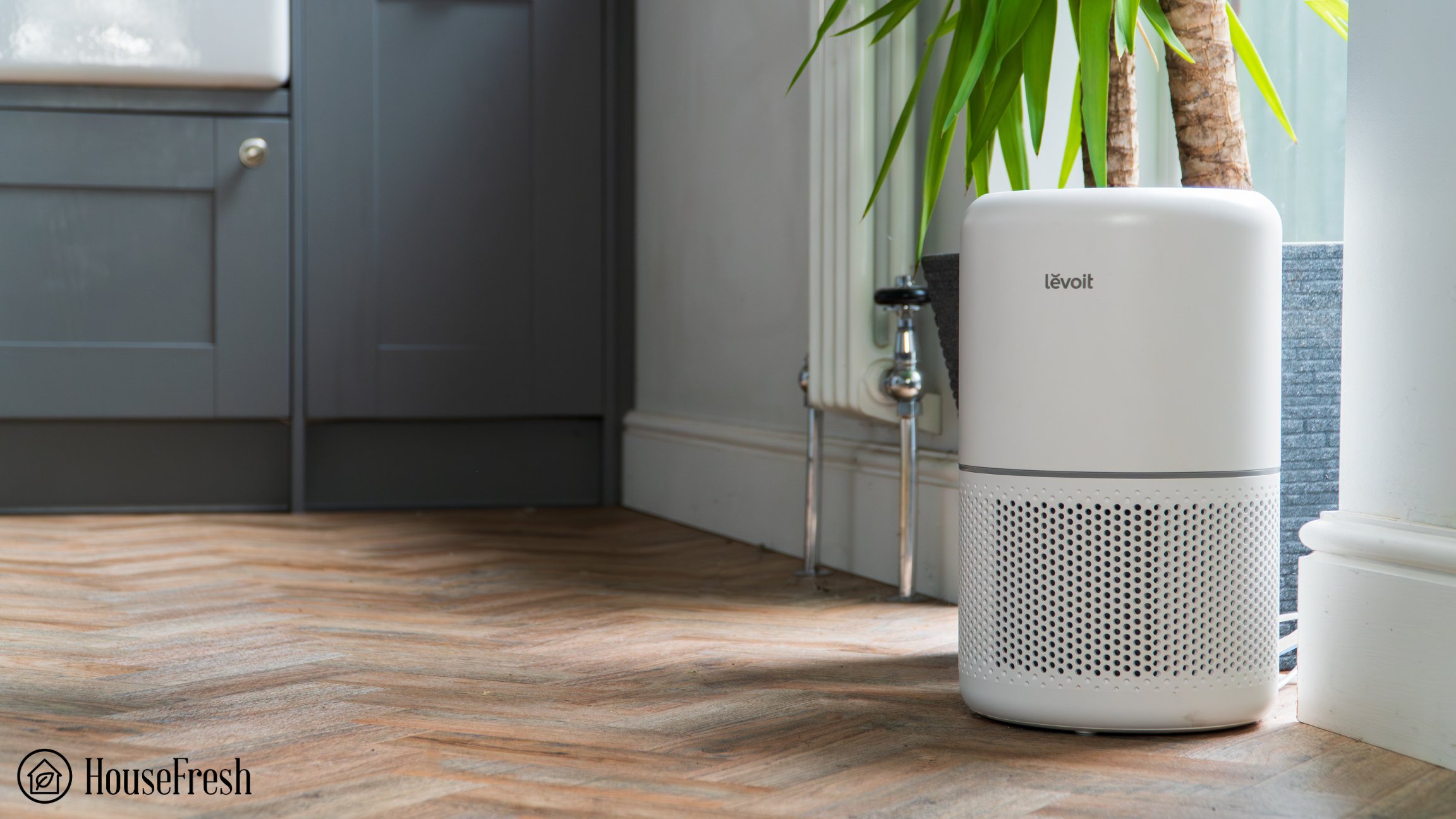
At first glance, not much seems to separate these two air purifiers.
They’re designed to work in the same-sized space, share the same dimensions, and have the same warranty. However, some marginal differences in weight, sound, and speed might swing your decision in favor of the Core 300S.
The updated Core 300S does have a slightly better CADR score, thanks to its improved fan efficiency. This aligns with the real-world air cleaning speed we witnessed when testing the 300S, as it cleared our test space one minute faster.
| Levoit Core 300 | Levoit Core 300S | |
| HouseFresh rating: | ★★★★★ | ★★★★★ |
| Time to clean our test room: | 40 minutes | 39 minutes |
| Air purifier technology: | 3-Stage Filtration (pre-filter for large particles, main filter for airborne particles, high-efficiency activated carbon filter for odors and gasses) | 3-Stage Filtration (pre-filter for large particles, main filter for airborne particles, high-efficiency activated carbon filter for odors and gasses) |
| Recommended room size: | 175 ft² | 195 ft² |
| Clean air delivery rate (CADR): | – Smoke: 113 CFM – Dust: 129 CFM – Pollen 134 CFM | – Smoke: 126 CFM – Dust: 134 CFM – Pollen 154 CFM |
| Dimensions (in inches / cm): | 14.2H x 8.7W x 8.7D inches (36H x 22W x 22D cm) | 14.2H x 8.7W x 8.7D inches (36H x 22W x 22D cm) |
| Weight (in pounds / kg): | 7.5 lbs (3.4 kg) | 5.95 lbs (2.7 kg) |
| Filter life: | 24 – 50 dB | 24 – 48 dB |
| Noise level (low – high): | 6 – 8 months | 6 – 8 months |
| Manufacturer’s Warranty | 2 years | 2 years |
| Estimated energy consumption: | $47.30 per year | $27.33 per year |
Design elements compared
When it comes to design, nothing special separates these two models.

The Core 300 and Core 300S are almost identical. While they may be different internally, you’d struggle to tell them apart side by side.
They both feature the same air inlet and outlet grills, come with a control panel on top of the unit, and have identical measurements.
However, looks might deceive you, as the Core 300S is 20% lighter than the 300. Its weight might be useful if you’re looking to utilize the purifier in different spaces around the home.
Ease of use and control panel design
When it comes to the controls, the winner has to be Core 300S. Despite having more functions, the panel remains easy to navigate.
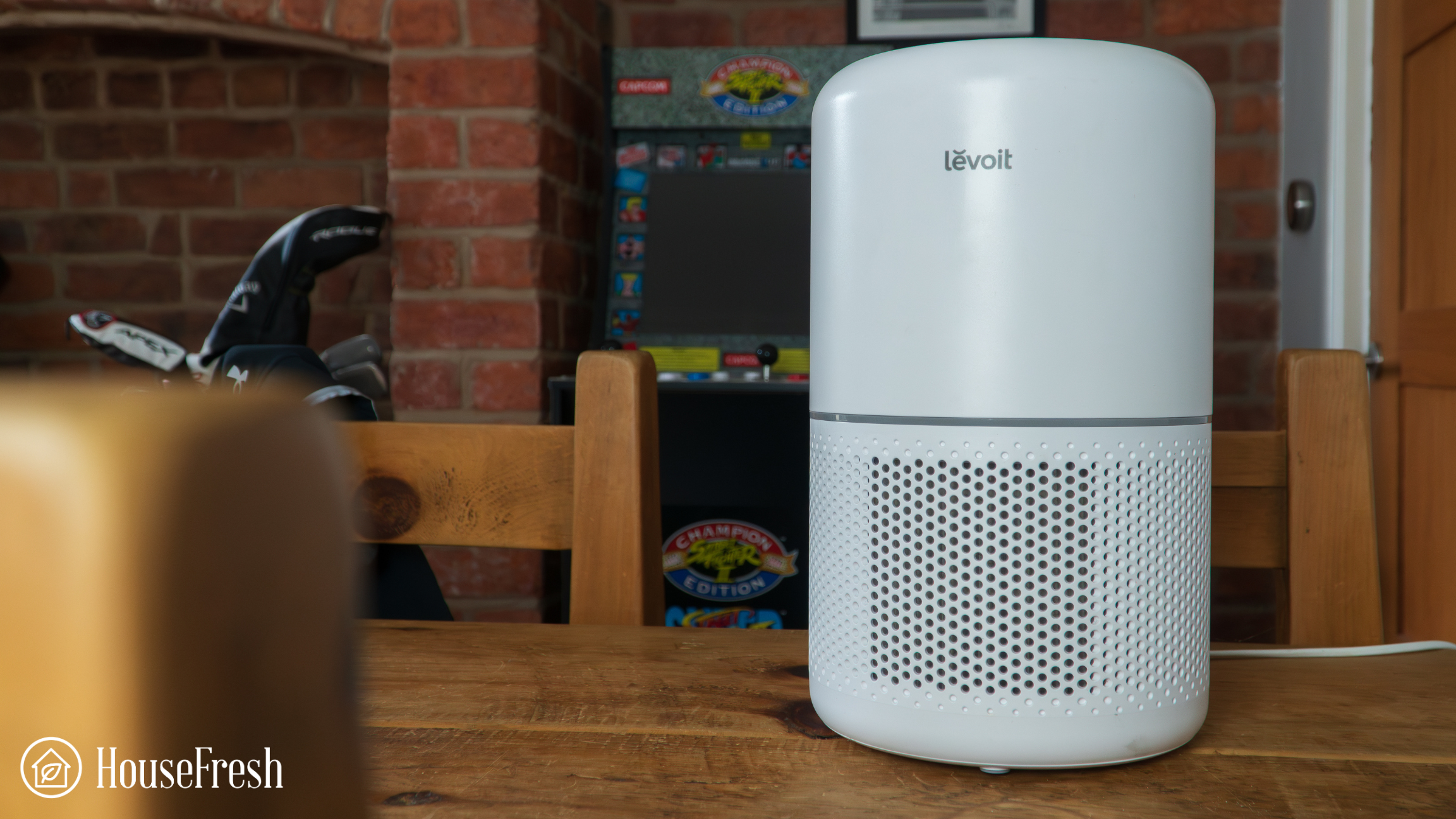
The control panel is where you’ll find the first glimpses of the 300S’s added smart features.
The brightly colored rings provide real-time feedback on your space’s air quality, changing from blue (indicating clean and healthy air) to green, orange, and red (indicating high levels of pollutants). This works in tandem with the new Auto mode, which uses air quality data to change the purifier’s speed settings automatically to react to changing pollution levels.

A new digital screen enables you to program the improved timer, ranging from 1 to 24-hour schedules. You can also cycle between the three fan speeds, kill the lights, activate sleep mode, and lock the controls by simply tapping the relevant icons.
If this isn’t enough to prove the 300S’s enhanced usability, you can also connect the device to Levoit’s VeSync app or a smart speaker. The app is super simple to connect to. All you need is a decent wifi connection, the app, and to be near the machine when you set it up.
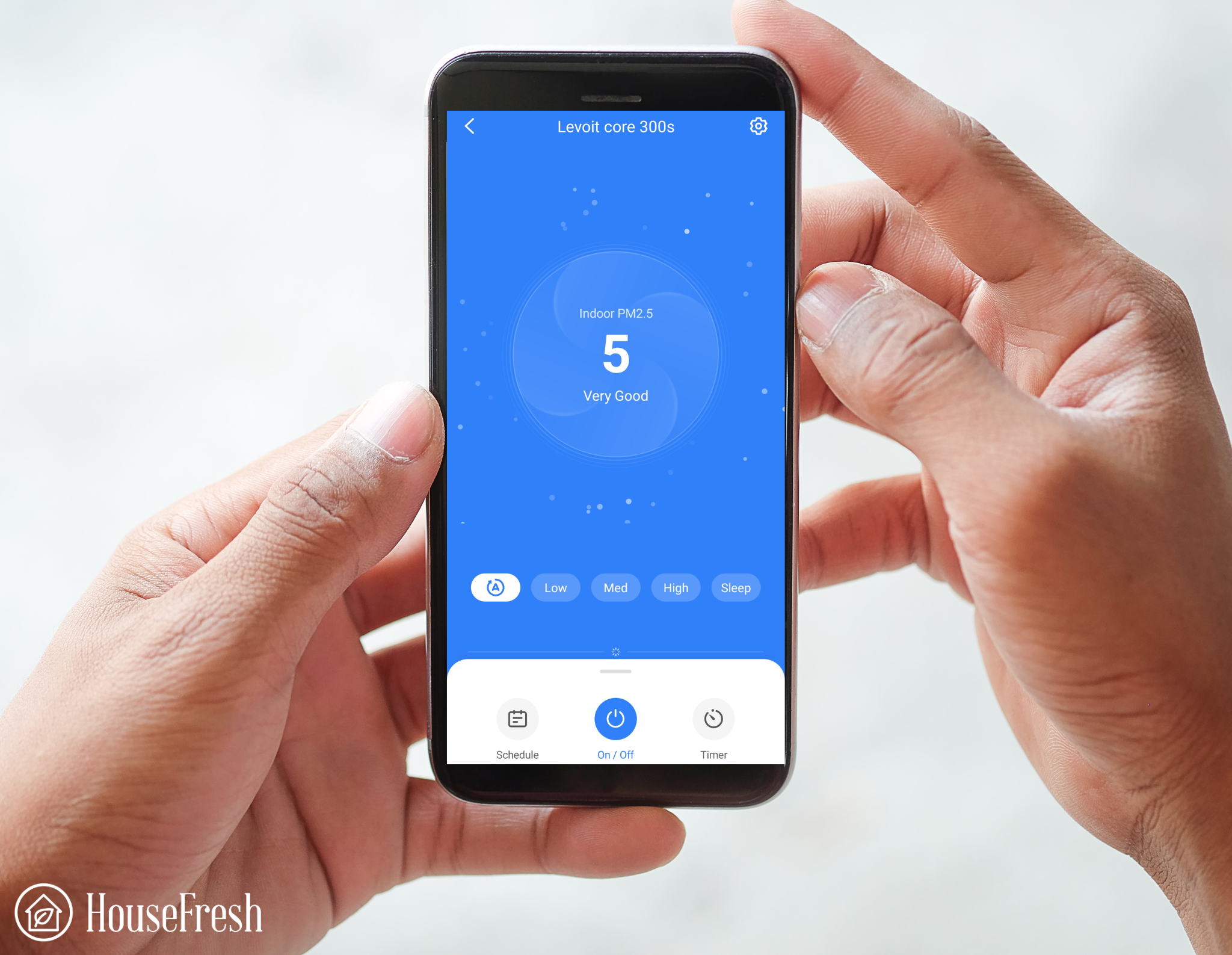
Once connected, you can adjust the unit’s settings and receive air quality updates from anywhere in the world. Connecting the 300S to a smart speaker lets you operate the appliance with simple voice commands.
The Core 300 control panel has many of the same settings icons as the 300S. The main layout differences are the timer function, which is limited to 2/4/6/8 hour schedules, and a larger icon to remind you when to change the filter.
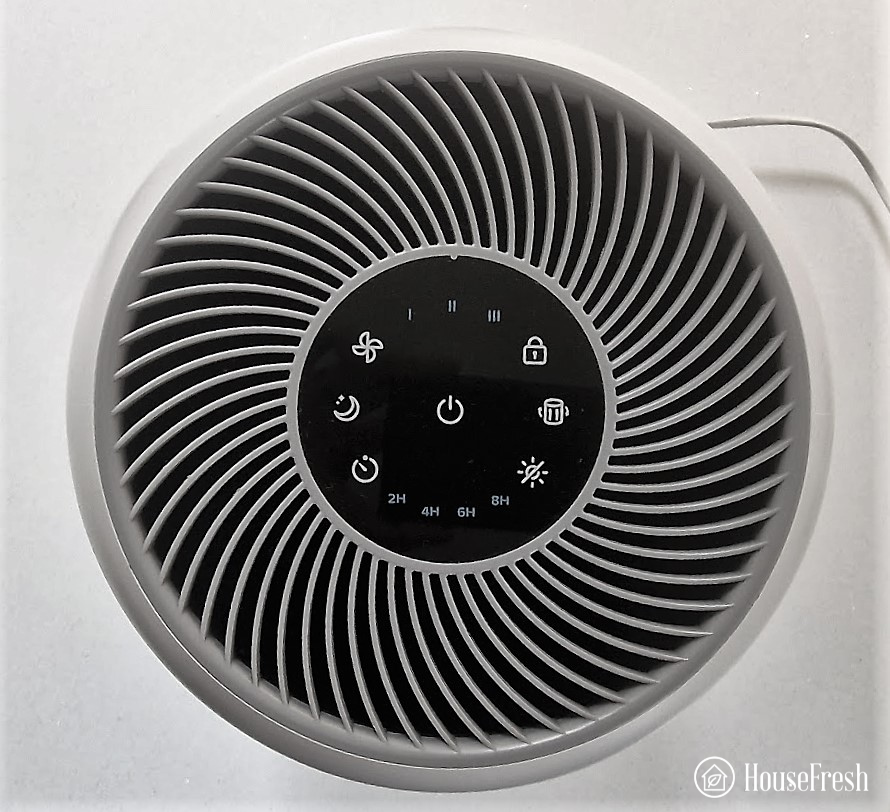
Operating the Core 300 is largely the same, utilizing an intuitive screen to cycle between fan speeds and settings, albeit with less functionality and no app or smart speaker compatibility.
Air filtration technology
Both the Core 300 and Core 300S use the same filters, making this a tie

Whichever unit you side with, it’s good to know that you get the same level of protection from Levoit’s three-in-one filter.
This cylindrical filter fits in effortlessly and provides comprehensive protection from even the smallest pollutant particles. It uses tried and tested mechanical filtration, ruling out any potentially harmful ionizer or UV technology.
The first layer of defense comes from the nylon pre-filter, which captures larger particles like hair, lint, and dust. You can then vacuum out the dirt to improve filtration performance. This is a key step in the purification process, as it keeps your primary filter in tip-top shape for longer.
Next is the activated carbon filter, which removes VOC pollutants like odor and chemical fumes. This has been beefed up by Levoit’s trademarked ARC formula, preventing gasses from leaking into your space.
The more carbon a filter contains, the better it will work against VOCs. The standard Levoit filter contains between 40 and 50 grams of carbon.
So, if you’re looking to combat odors or chemical fumes, take a look at Levoit’s specific Pet or Toxin filters, which contain double the carbon content with 90 grams.
Finally, you’ll find the primary filter. This is the most important part, as it removes microscopic particles such as allergens, smoke, and bacteria. Although this filter is no longer advertised as HEPA, they still work similarly, and we found it highly effective at removing the smallest PM1 particles during our tests.
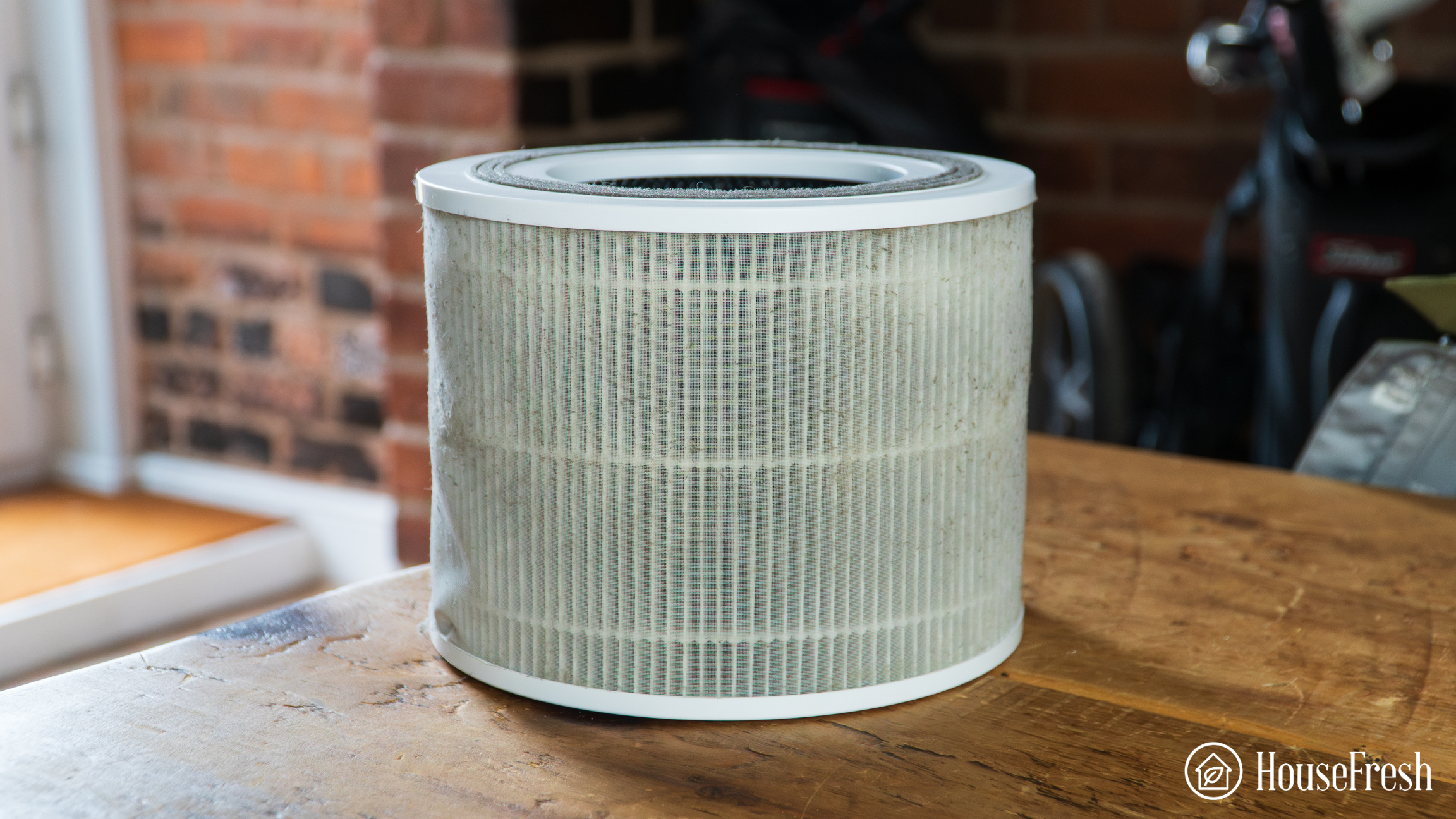
Installing the filter couldn’t be simpler. Both the 300 and 300S share the same design, where you twist the purifier body to open the filter compartment.
All you have to do is slot the filter in and reassemble the unit before turning it on.
New filters come wrapped in plastic packaging. Be sure to remove this polythene bag before you install the filter.
Purification performance test results, compared
When it comes to air purification, the Core 300S wins. It cleared all traces of smoke particles in our test room one full minute faster than its predecessor.

- In our home lab of 728 cubic feet, we light an incense stick to generate particle pollution and VOCs.
- We set up our trusted Purpleair Indoor Sensor with the latest Bosch gas sensor to track levels of PM1ug/m3, PM2.5ug/m3 and PM10ug/m3 and VOCs in the air.

- We switch the air purifier to its highest speed and measure how long it takes to get our room air quality down to PM1 level to 0.
- We use an energy meter to measure precisely how much electricity is used when running the unit at the lowest and highest fan speed settings.
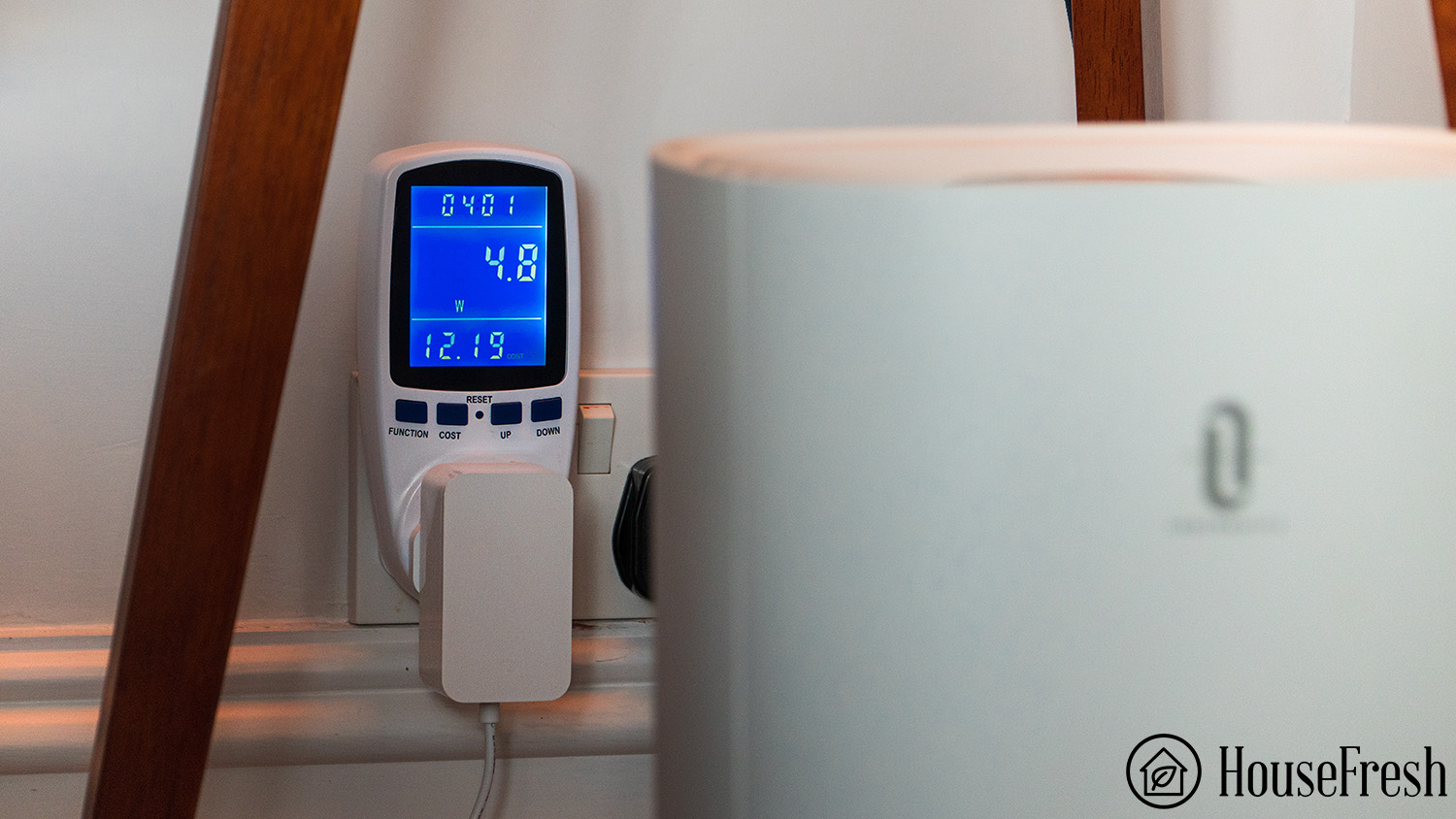
- We track sound levels emitted by the air purifier at different fan speeds with the help of a commercial sound meter.

Read more about our testing process and feel free to get in touch if you have any questions.
Each air purifier featured on HouseFresh has undergone our clean air speed test.
This is where we fill our home lab, measuring 728 cubic feet, with incense smoke and time how long it takes a purifier to clear all traces of PM1.0ug/m3, PM2.5ug/m3, and PM10.0 ug/m3 particles. We carry out each test in the same conditions and measure results with our trusty PurpleAir air sensor.
Our Core 300 and 300S tests showed that these units provide real value for money, clearing our space of all pollutants in 40 and 39 minutes, respectively.
With identical filters under the hood, it’s no wonder this was a tight contest. But thanks to the upgraded fan efficiency on the 300S, seen through its higher CADR scores, it proves to be the faster option. Although the 300 didn’t lose by much, every minute counts when it comes to breathing dirty and potentially dangerous air.
The Levoit Core 300S cleared our test room in 39 minutes
The Levoit Core 300 cleared our test room in 40 minutes
After carrying out our own tests, we can compare the units side-by-side to determine which purifier on the market offers the best value. Here’s a peek at how the Core 300 and 300S performed compared to other popular units we have tested.
Although the 300 and 300S aren’t the quickest air purifiers we’ve tested, we can clearly see that they lead the pack among the devices aimed for small-medium sized rooms, such as the Blue Pure 411, Medify MA-25, and Smart Air S. The 300S is only 4 minutes slower than the Mila — a $400 unit designed to work in spaces as large as 790 sq. ft.
Noise level test results compared
When it comes to noisiness, the Core 300S is the winner, as it’s a full two decibels quieter than the 300 when running at its highest fan speed.

How much sound an appliance makes is often an annoying afterthought once you’re stuck with the unit for good.
If an air purifier is noisy or peaks at unbearable volumes, the reality is that it won’t get used that often. That’s why we record the decibel levels of each air purifier we test to give you the complete picture before you take the plunge.
During our testing, we found that the Levoit Core 300S was the quieter of the two units. At full speed, it peaked at 48 dB (quieter than a refrigerator hum or moderate rainfall) compared to the 50 dB created by the Core 300.
At their lowest speed settings, both units created 24 dB of noise. This is the equivalent of a whisper, so you can rest assured you’ll get a good night’s sleep with night mode activated on either of these units.
To help put these figures into context, here’s a look at how the Core 300 and 300S compare to other popular air purifiers on the market.
Noisiness is subjective, so be sure to listen to our sound test videos for each purifier below to judge for yourself.
Long-term cost to run each unit compared
When it comes to costs associated with energy consumption and filter replacements, the Core 300S wins out thanks to its lower energy draw.

1. Yearly electricity costs = $47.30 (Core 300) vs. $27.33 (Core 300S)
Investing in an air purifier will cost more than the initial purchase price, with energy use being a key purchasing factor.
When testing the Levoit Core 300, we noted that it drew 45 watts on its highest speed setting. This equates to $47.30 per year if you were to use the air purifier 24/7, 365 days a year.
Although this might be a reasonable expenditure for some, we were even more impressed with the 300S, which only drew 26 watts on full power, bringing estimated annual energy costs down to $27.33.
Using either unit less frequently will bring down this expenditure. But with a smaller unit, we advise using the air purifier as much as possible to reap the rewards of clean air around the clock.
An added bonus of the 300S is its Auto mode, which automatically adjusts speeds whenever pollutant levels change. This means the unit will operate at a lower power once pollutants have subsided.
2. Yearly filter costs = $29.98 (Core 300) versus $29.98 (Core 300S)
Another key cost to consider is filter replacements. Filter lifespans can vary greatly between manufacturers and models, so it’s wise to shop around and understand what you might pay in the long run before committing to a purchase.
As the Core 300 and 300S use the same filter, there’s no winner or loser here.
In line with their Core range ethos, Levoit offers reasonably priced replacement filters to keep your air at home cleaner for longer.
At the time of writing, a genuine Levoit filter replacement costs $29.98, which, according to Levoit, lasts between six to eight months.
- 𝐏𝐑𝐎𝐓𝐄𝐂𝐓 𝐘𝐎𝐔𝐑 𝐈𝐍𝐕𝐄𝐒𝐓𝐌𝐄𝐍𝐓: Search for B07RSZSYNC or Core300-RF for the genuine Levoit replacement filter to ensure what you’re buying is worthy of your investment
- 𝐆𝐄𝐍𝐔𝐈𝐍𝐄 𝐑𝐄𝐏𝐋𝐀𝐂𝐄𝐌𝐄𝐍𝐓 𝐅𝐈𝐋𝐓𝐄𝐑: Designed for Levoit Core300-P / Core 300S-P air purifier to maintain its peak performance. With cost-effective price to save much cost for your all-year-round air cleaning need. It is recommended to replace filters every 6-8 months
Generic filters for these purifiers are widely available, which can help reduce costs even further. There’s no guarantee the replica filters have been built to the same standard as the official replacements offered by the manufacturer. But in the wake of Dyson challenging Levoit’s HEPA filter classification, it may well be worth the gamble.
Most air purifiers use mechanical filters that capture airborne particles such as dust, dander, and debris in tightly woven fiberglass pleats.
Over time, these filters become clogged with pollutants and lose efficiency, which is when you should replace them.
Bottom Line: Should you get a Levoit Core 300 or a Core 300S?
The Core 300 and 300S ran a close race throughout our comparison, but which unit will win overall?
✅ If you want a speedy and smart air purifier capable of removing the smallest particles without excess noise or energy use — go for the Levoit Core 300S.

✅ If you want an air purifier to use periodically without a large upfront investment — go for the Levoit Core 300.
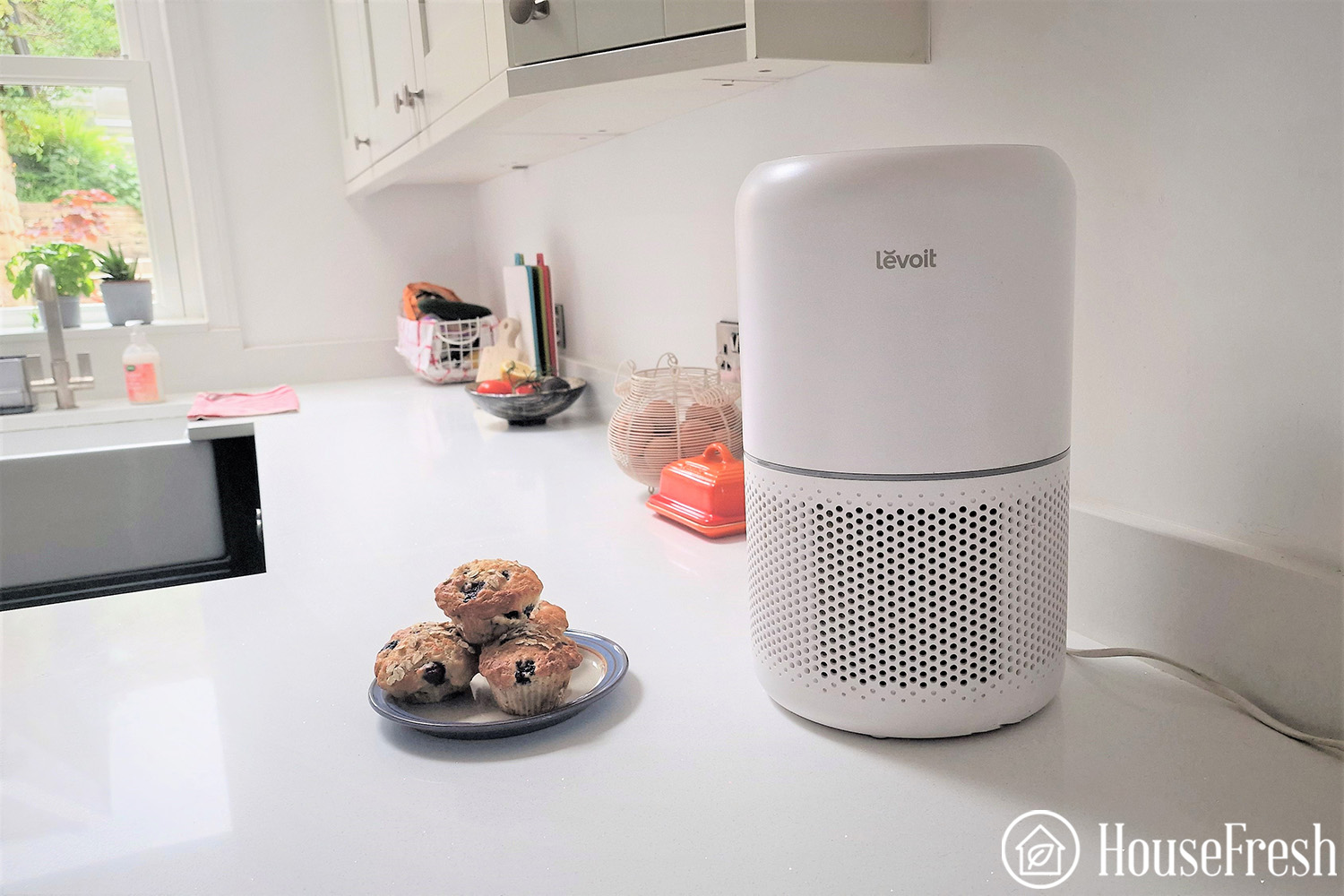
There isn’t much to separate the two air purifiers in terms of performance, with the Core 300S clearing our test space just one minute faster than the Core 300. But overall, the latest 300S unit offers more functionality and user-friendly features that will keep your air clean while costing less to run in the process.
Of course, if you’re not interested in smart features and the benefits they might bring, you may be tempted to save yourself $50. This will only work if you plan to use the purifier sporadically, as any savings will be lost in energy costs in the space of three years if used daily (you’ll pay $59.60 extra when running a Core 300 for a year compared to the 300s).
SOURCES
We calculated the monthly energy consumption costs with the help of the Department of Energy’s appliance energy calculator. We calculated yearly costs associated with running the Levoit Core 300 and 300S for 24 hours a day, 365 days a year. We ran this calculation utilizing the US average utility rate of $0.12/kWh as of January 2024.
Last update on 2024-04-26 / Affiliate links / Images from Amazon Product Advertising API






